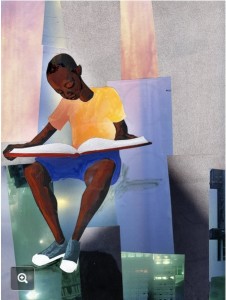Dear Commons Community,
The New York Times editorial today blasts the Koch brothers as oligarchs who are perverting the electoral system in this country by funding campaigns srictly designed to promote their economic interests. The editorial makes the point that Democrats such as Senators Harry Reid, Mark Begich, and Kay Hagan are starting to fight back and take on the distortions that characterize the Koch political operations. The entire editorial is at the end of this posting. Here is a sample:
“The leader of this effort has been Senator Harry Reid, the majority leader, who has delivered a series of blistering attacks against the Kochs and their ads on the Senate floor over the last few weeks. In addition, the Democratic Senatorial Campaign Committee has set up a website, www.kochaddiction.com, to remind voters of just what the Kochs stand for, and why they raised $407 million in the 2012 election. And individual candidates are making sure voters know who is paying for the ad blitz.
“The billionaire Koch brothers,” says one of the people quoted in an ad released Monday by Senator Mark Begich of Alaska, who has been the object of one of their blatantly false television barrages. “They come into our town, fire a refinery, just running it into the ground, leaving a mess.” Senator Kay Hagan of North Carolina reminds voters that the Kochs and their allies have pressed for high-end tax breaks that burden the middle class.
Mr. Reid’s comments have gone to the heart of the matter. In his most recent speech, he pointed out that the fundamental purpose of the Kochs’ spending is to rig the economic system for their benefit and for that of other oligarchs. They own an industrial network that ranks No. 14 on the list of the most toxic American air polluters, and got their money’s worth in 2010 by helping elect a Republican House majority that has resisted environmental regulation.”
The Koch Brothers are disgraces to the democratic principles and I am glad that Reid and company are calling them out for who they are.
Tony
================================================================
The Democrats Stand Up to the Kochs!
New York Times Editorial – March 11, 2014
Democrats have for too long been passive in the face of the vast amounts of corporate money, most of it secret, that are being spent to evict them from office and dismantle their policies. By far the largest voice in many of this year’s political races, for example, has been that of the Koch brothers, who have spent tens of millions of dollars peddling phony stories about the impact of health care reform, all in order to put Republicans in control of the Senate after the November elections.
Now Democrats are starting to fight back, deciding they should at least try to counter the tycoons with some low-cost speech of their own. Democrats may never have the same resources at their disposal — no party should — but they can use their political pulpits to stand up for a few basic principles, including the importance of widespread health-insurance coverage, environmental protection and safety-net programs.
The leader of this effort has been Senator Harry Reid, the majority leader, who has delivered a series of blistering attacks against the Kochs and their ads on the Senate floor over the last few weeks. In addition, the Democratic Senatorial Campaign Committee has set up a website, www.kochaddiction.com, to remind voters of just what the Kochs stand for, and why they raised $407 million in the 2012 election. And individual candidates are making sure voters know who is paying for the ad blitz.
“The billionaire Koch brothers,” says one of the people quoted in an ad released Monday by Senator Mark Begich of Alaska, who has been the object of one of their blatantly false television barrages. “They come into our town, fire a refinery, just running it into the ground, leaving a mess.” Senator Kay Hagan of North Carolina reminds voters that the Kochs and their allies have pressed for high-end tax breaks that burden the middle class.
Mr. Reid’s comments have gone to the heart of the matter. In his most recent speech, he pointed out that the fundamental purpose of the Kochs’ spending is to rig the economic system for their benefit and for that of other oligarchs. They own an industrial network that ranks No. 14 on the list of the most toxic American air polluters, and got their money’s worth in 2010 by helping elect a Republican House majority that has resisted environmental regulation.
“That Republican majority is, in fact, working to gut the most important safeguards to keep cancer-causing toxins and pollution that cause sickness and death out of the air we breathe and the water we drink,” Mr. Reid said. “Without those safeguards, the Koch brothers would pass on the higher health care costs to middle-class Americans while padding their own pocketbooks.” He called it “un-American” to spend lavishly to preserve tax breaks and end workplace safety standards.
Republicans quickly rushed to the cameras to demand an apology on behalf of their benefactors, furious that anyone would dare interrupt an industrialist in the process of writing a check. But Mr. Reid made it clear no apology would be forthcoming.
What the Kochs want — and polls show they have a strong chance of getting it — is a Senate led by Mitch McConnell of Kentucky, now the minority leader, who promises in his latest campaign ad to “be the leader of the forces that take on the war on coal,” the most polluting power-plant fuel. Nothing could be better for the owners of Koch Carbon, and they are willing to spend whatever it takes to make it happen. But they are finally encountering some resistance.




